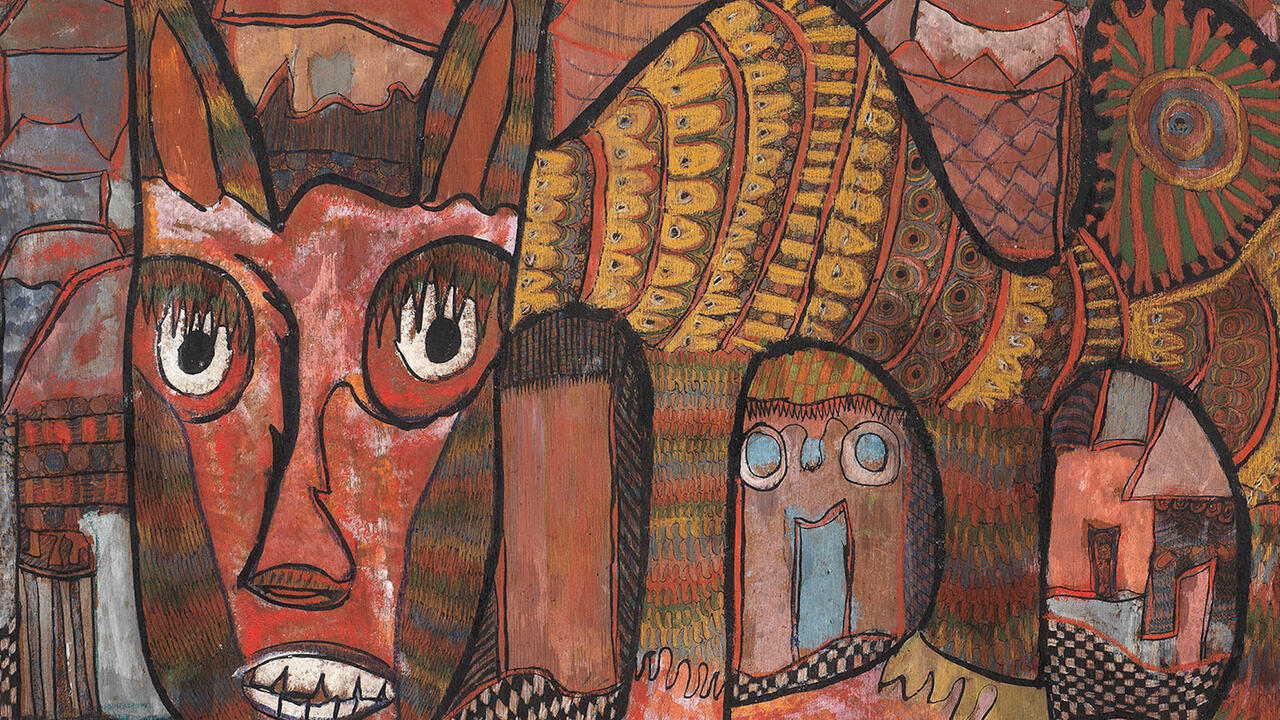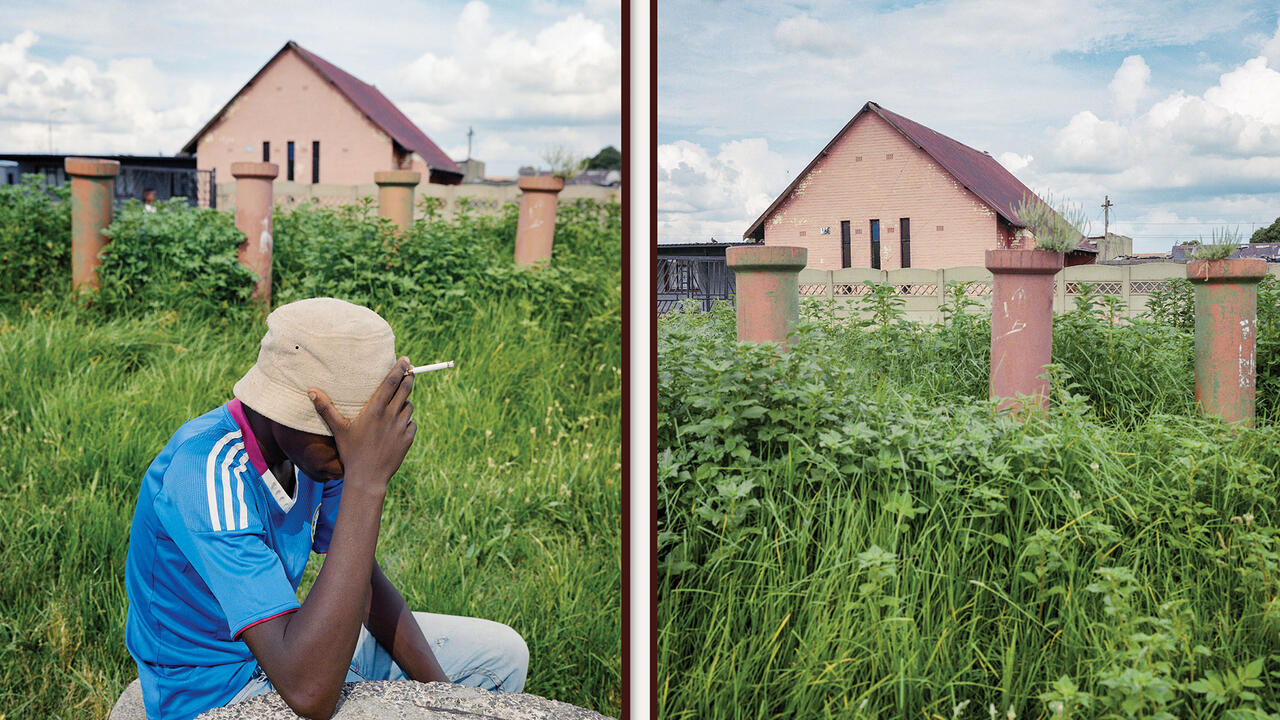Portia Zvavahera
Stevenson, Cape Town, South Africa
Stevenson, Cape Town, South Africa

Portia Zvavahera, who in 2017 participated in a three-month residency at London’s Gasworks, is not the first Zimbabwean artist to experience a rollercoaster of emotions while living in the UK. Following his expulsion from the University of Rhodesia (now Zimbabwe) in 1973, novelist Dambudzo Marechera attended Oxford University, where he encountered ‘drizzling clouds’, ‘castanets of stray sunlight’, drunken revelry and aristocratic entitlement amidst racially segregated Oxford. The 12 figurative paintings in ‘Take Me Deeper’, Zvavahera’s fifth solo exhibition at Stevenson, are similarly expressive of the alienation of first encounter.
An occasion for creative retreat, Zvavahera’s London residency was a period of separation between the artist and her family. The attendant anxiety, as well as her unsure engagement with everyday London, informed the artist’s vividly coloured expressionist paintings. Sumptuous, with a fine sense for balancing gesture and detail, these new paintings are characterized by various descriptions of hopeful containment and ambiguous embrace. In a rare 2015 interview, Zvavahera (who largely avoids media engagements) spoke of the ways her paintings often reflect her life experiences. ‘I paint mostly painful moments,’ she said, adding: ‘It’s like a healing process.’

In the most obviously biographical works on view, juvenile figures are depicted either literally cocooned by parental arms (Onaiwo Vana Vangu [Watch over My Kids], all works 2017) or enfolded by radiating bands of colour (My Spirit with You). Longing cohabits with menace. In Zvandiswededza (It Has Drawn Me Closer), a work of funerary blue and dirty white, an ambiguous figure wearing a red hood extends its Philip Guston-like cartoon hands around an elaborately described female figure in Cinderella dress. The detailing of the dress includes a swirling motif that was block-printed directly onto the canvas using oil-based printing ink, a technique the artist deploys in most of the works on view.
Zvandiswededza is displayed adjacent to Entangled, which shows a silhouetted, grey-blue male figure kissing the ochre face of a woman in white bridal regalia. The man’s Nosferatu-like fingers grope at a breast; the woman’s face shows no pleasure. Cover Me is rendered in warmer tones, mostly bright yellow and soiled purples that lapse into featureless brown, and depicts a white skull astride an ornate gown. The portly figure’s arms are crossed, one limb painted red, the other yellow. A yellow-eyed domestic pet – redolent of South African painter David Koloane’s menacing dogs – sits on the lap of the corpulent and cadaverous figure. Almost causally described, Cover Me is a striking depiction of physical authority and decay.

Pleasure was not my initial response to Zvavahera’s work, neither at the 2013 Venice Biennale, her breakout moment, nor at her subsequent Stevenson debut in 2014, ‘Mavambo Erwendo (Beginning of a Profound Journey)’. Her work, which pivots around exaggerated depictions of female subjects, already mixed descriptions of familial love and ritual with expressions of grotesquery; but her style seemed to me too closely allied to that of her countryman, Misheck Masamvu. Zvavahera’s 2016 solo show at Stevenson, ‘What I See Beyond Feeling’, prompted a rethink: marked by its fuller forms and ambiguous portrayals of love and loss, it announced her mature arrival.
Murudo (Love) is the most arresting work here. Modestly scaled, it depicts a tiny, thumb-sized figure trapped in a white dress made of confident brushstrokes, the edging of which is composed of a printed pattern, billowing across the canvas. Set against a red and orange ground, the vaguely Caucasian woman has no face – she is simply a dirty smudge of pink paint. This woman’s forehead bears a visible wound, detailed in red – one seemingly caused by a casual splatter of grey paint that runs across it. This beauty, reminiscent of Edgar Degas, is dogged by jeopardy.
Main image: Portia Zvavahera, Kuzvarwa Patsva (Rebirth), 2017, (detail), oil-based printing ink and oil bar on canvas, 170 x 99cm. Courtesy: Stevenson, Cape Town, South Africa





















